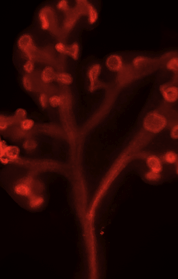Study seeks functional lungs from stem cells
 Researchers in the US have turned human stem cells into functional lung and airway cells for the first time.
Researchers in the US have turned human stem cells into functional lung and airway cells for the first time.
The incredible advance could lead to new ways of modelling lung disease, screening drugs and studying human lung development.
Most excitingly, the development could one day allow scientists to generate lung tissue for transplantation. The new study was published in the latest Nature Biotechnology journal.
“Researchers have had relative success in turning human stem cells into heart cells, pancreatic beta cells, intestinal cells, liver cells, and nerve cells, raising all sorts of possibilities for regenerative medicine,” said study leader Hans-Willem Snoeck, professor of medicine (in microbiology & immunology) at the Columbia University Medical Center (CUMC).
“Now, we are finally able to make lung and airway cells. This is important because lung transplants have a particularly poor prognosis. Although any clinical application is still many years away, we can begin thinking about making autologous lung transplants - that is, transplants that use a patient's own skin cells to generate functional lung tissue.”
The research builds on discovery made by some members of the same team in 2011.
They found of a set of chemical factors that can turn human embryonic stem (ES) cells or human induced pluripotent stem (iPS) cells into anterior foregut endoderm – the precursors of lung and airway cells.
In the latest study, Dr Snoeck and colleagues uncovered some new contributors to the transformation of human ES or iPS cells into functional lung epithelial cells (cells that cover the lung surface).
The cells were found to express markers of at least six types of lung and airway epithelial cells, particularly markers of type 2 alveolar epithelial cells. Type 2 cells are important because they produce surfactant, which allows gas exchange to take place and also participate in repair of the lung after injury and damage.
“In the longer term, we hope to use this technology to make an autologous lung graft,” Dr Snoeck said.
“This would entail taking a lung from a donor; removing all the lung cells, leaving only the lung scaffold; and seeding the scaffold with new lung cells derived from the patient. In this way, rejection problems could be avoided.”
Dr Snoeck is investigating this approach in collaboration with biomedical engineers.
“I am excited about this collaboration with Hans Snoeck, integrating stem cell science with bioengineering in the search for new treatments for lung disease,” says Gordana Vunjak-Novakovic, co-author of the paper and Mikati Foundation Professor of Biomedical Engineering.
More information is available in the full report, accessible here.








 Print
Print